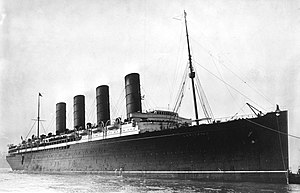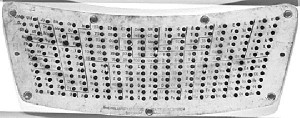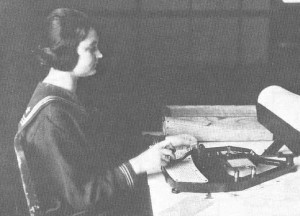|
We began class by talking about the paper, “When Computers were Human”, that was written by Paul Ceruzzi. Dr. Wagstaff started by asking us whether or not we felt that the reading questions were helpful. There was a general lack of response due to it being early and several students having not yet arrived. We then went on to talk about the paper itself, which talked about how in the early 1940s, humans did all of the necessary scientific and engineering calculations by hand or with mechanical calculators. This was a barrier in many scientific fields, as it took an increasing long time as calculations became more complex. Many research facilities had to keep hiring more and more human computers to keep up with all the calculations they had to do. Even doing this did not give them big increases in computing power, because unlike electronic computers which have exponential increased in power, human computers cannot increase exponentially. We then began discussing what the job of being a human computer was like. Most computers were woman and there job usually consisting almost entirely of just doing math problems and not any design or testing. This was left up to the engineers, who were usually men. To us today, the job of being a computer sounds pretty boring, but women at the time considered it a good job. This was due mostly to the fact that it was better than most other jobs they could get at the time and it paid well. It also allowed them to contribute to the war effort and the Navy employed many women computers who were given ranks and titles. The video: ENIAC was then shown. The part of the video we watched was an interview with a woman who worked on ENIAC. She talked about how they had to program with patch cables and how reliability was always a big issue and you could never be sure that the machine was working correctly. To deal with this, they would run a test program before and after they ran the actual program so that they could make sure the machine was working properly before the program and that something hadn’t gone wrong while they ran program. Next we watched the video: FIRST COMPUTER ENIAC. The part of the video we watched talked about how they had to physically wire the machines. ENIAC was built in a circular room, so the lead programmer would stand in the middle yelling instructions to women who were standing next to certain parts of the computer who would wire the machine. They also showed someone double checking some of the calculations with an abacus because at the time that was much more reliable then the computer. We then discussed the UNIVAC computer, which was finished in 1951. Computers need the ability to do logical operations and they also need memory. In today’s computers, operations are done in the CPU. At the time of UNIVAC, they were done with vacuum tubes. Vacuum tubes are large and burned out a lot, so they were not ideal. Later computers used transistors instead of vacuum tubes, which are much smaller and more reliable. Today many transistors can be fit onto one silicon chip. Vacuum tubes are not used very much anymore, although they are still used in certain things like amplifiers. For memory, the UNIVAC used mercury delay lines. These sent acoustic waves through tubes full of mercury. Mercury was used so that the waves would propagate slowly. The tube of mercury had to be kept at a constant temperature; otherwise the waves would propagate too slowly or quickly. A few years after UNIVAC, they started using magnetic tape as memory, which was a huge advance at the time. They had machines to convert a deck of punch cards into a magnetic tape. This magnetic tape could then be read much faster by the computer than punch cards. We then watched the video: UNIVAC: Remington-Rand Presents the UNIVAC. The video talks about how to program the UNIVAC. Programmers at the time would write a program and then had to compile it themselves. Then typists would type the compiled program into a console that would put the program on a magnetic tape. This machine was also backwards-compatible with punch cards. Dr. Wagstaff then gave each of us an unpunched card which we attempted to write a short message on. This took a while to do, even for short messages, and we talked about ways that the process could be made easier. One of these would be to have the more commonly used letters, such as e and a, be easier to punch than other letters. This concluded our discussion for the class and Dr. Wagstaff asked us to find and bring in a fact about IBM’s Deep Blue computer or Watson, the computer on Jeopardy. |
Class Summary: 10/26
27 Thursday Oct 2011
Posted in Class Summary










